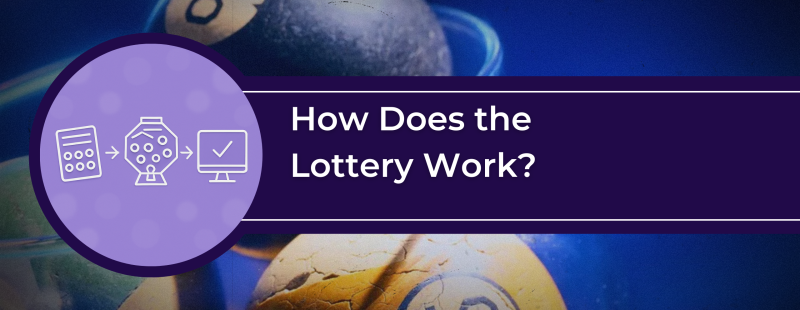
Understanding the Mechanics Behind Lottery Games in India
Ever wondered what goes on behind those lottery tickets? In India, lotteries are a big deal – just spend a few rupees and dream of crores! But there’s more to it than luck.
Lotteries are run by the government or private groups (where legal), and each ticket goes through a system that’s set up to be fair and secure. Numbers are drawn randomly, and if your ticket matches, badhai ho, you win!
Some states allow lotteries to earn money for public projects, while others ban them completely.
What Is a Lottery? Defining the Game of Chance
The Fundamental Concept Behind Lottery Games
A lottery is a form of gambling that involves the drawing of numbers at random for a prize. It’s a game where participants purchase tickets containing various number combinations, and winners are determined through a random selection process.
Lotteries are purely games of chance, with every ticket having an equal mathematical probability of winning an underscore regardless of who purchases it.
In most lotteries, you buy a ticket, money goes into a prize pool, and winners are picked through a random draw. What makes it different from regular gambling is that prizes and rules are fixed, the draw is fair, and usually the sarkar is involved.
Lottery Game Concept – Step by Step
- Buy Ticket. You pay a small amount (like ₹10 or ₹100) to enter.
- Money Collection. All ticket money goes into one big pot – this becomes the prize pool.
- Random Draw. Winners are picked by a lucky draw – fully random and usually supervised.
- Win & Claim. If your number matches, you win cash or a prize. Go claim it with your ticket!
- Govt. Involvement. In most states, the government runs or approves the lottery to keep things fair.
Historical Evolution of Lottery Systems in India
Lotteries have deep historical roots in India, evolving from informal community drawings to the sophisticated state-run operations we see today. Traditional forms of lottery games have existed in various cultural contexts across the subcontinent for centuries, but modern, regulated lottery systems began taking shape in post-independence India.
The first official state lottery was introduced in Kerala in 1967, establishing a model that would eventually be adopted underscore by several other states.
Timeline: Evolution of Lottery in India
- Before 1960s – Local & Informal
- People played small-scale lottery-style games in villages and towns.
- Mostly unregulated, seen as part of local traditions and social gatherings.
- No government control. High chance of fraud.
- 1967 – Kerala Leads the Way
- Kerala becomes the first Indian state to launch an official State Lottery.
- Aim: Generate government revenue and provide employment.
- The model was transparent, regulated, and publicly managed.
- 1970s–1990s – Other States Join In
- Inspired by Kerala’s success, states like Maharashtra, Punjab, West Bengal, and Sikkim start their own lotteries.
- Lotteries become a popular source of state income.
- More structured draws, prize pools, and official outlets introduced.
- 1998 – Supreme Court Ruling
- The Supreme Court of India upholds the legality of lotteries run by states.
- Confirms that states can choose to allow or ban lotteries.
- Lottery declared a form of “res extra commercium”, meaning it’s not a normal trade, so strict rules apply.
- 2000s – Bans in Some States
- Due to addiction and social concerns, many states ban or restrict lotteries.
- Some switch to online-only or weekly formats.
- States like Tamil Nadu, Gujarat, and Bihar ban them completely.
- 2010s–Present – Digital Shift
- Some states begin offering online lottery platforms.
- Focus on transparency, security, and easy access.
- Digital payment options and result tracking improve user experience.
Today’s lottery systems build upon decades of regulatory evolution, balancing public interest with the entertainment value that makes lotteries so appealing underscore to millions of players.

How the Lottery System Operates
Ticket Production and Security Features
The lottery process begins long before any numbers are drawn, with the production of secure, traceable tickets. Modern lottery tickets incorporate sophisticated security features to prevent counterfeiting and fraud.
Step | What Happens |
|---|---|
| Ticket Printing | Done in super secure factories |
| Security Features | Watermarks, barcodes, serial numbers, holograms – full tight scene |
| ID System | Every ticket is unique – no duplicate drama |
✔️ Goal: Make sure only real, legit tickets can win
✔️ Why it matters: To stop fraud and fake winning claims
This meticulous attention to ticket security represents the first critical step in maintaining lottery integrity, ensuring that only legitimate tickets can claim prizes and that each purchase is properly recorded in the underscore system.
Distribution Networks and Sales Channels
Once produced, lottery tickets reach consumers through carefully managed distribution networks. State lottery corporations work with authorized vendors, ranging from dedicated lottery shops to general retailers who sell tickets alongside other products.
These vendors undergo background checks and must adhere to specific regulations governing lottery sales, including age verification and proper ticket underscore handling.
Commission-based compensation motivates this retail network, with vendors typically earning a percentage of their ticket sales plus bonuses for selling winning tickets. Many states also operate dedicated lottery terminals that electronically validate purchases and issue computer-generated tickets.
| Player Buys From | Details |
|---|---|
| Lottery Shops | Dedicated stores that only sell lottery tickets |
| General Stores | Kirana-type shops with a license to sell tickets |
| Lottery Terminals | Machines that print tickets instantly |
Ticket Purchase Process: From Counter to Confirmation
Purchasing a lottery ticket involves a straightforward but precisely managed process. Players select their preferred lottery game and either choose specific numbers or opt for randomly generated “quick pick” combinations.
The vendor enters this information into the centralized lottery system, which generates a ticket containing the selected numbers, draw date, ticket price, unique identifiers, and validation underscore codes.
After payment, players receive their physical ticket – the crucial proof of participation that will be required to claim any prizes.
What’s on the Ticket:
- Your chosen numbers
- Draw date
- Ticket price
- Serial number & barcode
- Prize claim code
Most lottery systems now create real-time electronic records of all ticket purchases, allowing for verification even if a physical ticket is damaged or lost, though policies regarding claims without physical tickets vary by state. This transaction creates the official entry that connects the player to the upcoming draw and possible underscore winnings.
Draw Mechanisms and Randomness: Ensuring Fair Results
Mechanical Drawing Systems: Traditional Ball Draws
Many Indian state lotteries still utilize traditional mechanical drawing systems, which involve physical numbered balls tumbling in transparent drums or containers. These systems typically use ping-pong balls of identical size, weight, and density that are labeled with numbers corresponding to the lottery format.
Before each draw, the balls undergo testing to verify their physical properties, ensuring no ball has characteristics that would make it more likely to be underscore selected.
| Feature | Details |
|---|---|
| Equipment | Ping-pong type balls in a glass drum |
| Fairness Check | All balls same size, weight, no bias |
| Draw Process | Balls mixed with air and pulled randomly |
| Trust Factor | Public can see the draw live |
This physical process provides visual confirmation of randomness that builds public trust.
Electronic Random Number Generators: Digital Draws
Increasingly, state lotteries are adopting electronic random number generator (RNG) systems for their draws. These computerized systems use complex algorithms to produce number combinations that cannot be predicted or manipulated.
Modern RNG systems undergo rigorous certification by independent testing laboratories to verify their randomness and security against potential tampering underscore attempts.
| Feature | Details |
|---|---|
| RNG = Random Number Generator | Computer picks random numbers |
| Tamper-Proof | Tested by outside labs for fairness |
| Cost & Speed | Faster and cheaper than ball draws |
| Extra Security | Multiple checks, video proof, sometimes hybrid draws (digital + visual) |
Many lotteries using RNG systems implement strict security protocols, multiple verification layers, and sometimes hybrid approaches that combine electronic selection with physical display methods.
The goal remains the same as with mechanical systems: generating verifiably random results that maintain public underscore confidence.
Verification and Audit Processes: Who Checks the Draw?
Regardless of the drawing method used, comprehensive verification and audit processes surround every lottery draw. Independent auditors typically oversee the entire procedure, verifying equipment calibration, witnessing the draw itself, and certifying the results. These auditors come from accounting firms or specialized lottery compliance organizations with no stake in the underscore outcome.
| Who | Role |
|---|---|
| Independent Auditors | Watch entire process start to end |
| Video Recording | For proof and public trust |
| Final Verification Team | Confirms winning numbers, updates system |
Most draws are recorded on video and archived, creating a permanent record that can be reviewed if questions arise. After the draw, multiple verification steps confirm that winning numbers are accurately reported and entered into prize calculation systems.
These rigorous oversight measures protect both players and lottery operators, ensuring that results reflect genuine randomness rather than error or manipulation underscore of any kind.

Prize Distribution and Claiming: From Winning to Collecting
Prize Structures and Odds: Understanding Your Chances
Lottery prize structures vary significantly across different games and states, but all follow predetermined patterns established before ticket sales begin. Typical Indian lottery games feature tiered prize structures with varying odds of winning.
| Prize Type | Example (Kerala Lottery) | Odds |
|---|---|---|
| Jackpot | ₹1 crore to ₹10 crore | 1 in lakhs/millions |
| Mid-level Prizes | ₹1 lakh to ₹10 lakh | Better odds |
| Small Prizes | ₹100 to ₹5,000 | Higher chances |
| Consolation | Fixed amount for close matches | Common wins |
Understanding these odds provides context for players – while the chance of hitting the jackpot might be one in millions, the overall probability of winning some prize is often much more underscore favorable.
Winner Verification Process: Proving Your Win
When players believe they hold a winning ticket, a detailed verification process begins.
How Lottery Winnings Are Verified:
- Present the physical ticket at an authorized center
- Officials scan barcodes and check serial numbers
- Ticket must match official draw results
- For big prizes:
- Extra checks like forensic testing
- Winner interview
- Purchase history review
- Some states keep a waiting period before releasing big payouts
- Purpose: To catch fraud and ensure only real winners get paid
Payment Methods and Timeframes: Receiving Your Prize
Once a winning ticket is verified, prize payment follows procedures that vary based on the amount won.
| Prize Amount | Where to Claim | Payment Type |
|---|---|---|
| Small (under ₹10k) | Local vendor or office | Cash or cheque |
| Big (₹10k–₹1 crore) | Lottery HQ | Bank transfer, cheque |
| Mega jackpot | HQ + documents | Lump sum or in parts |
Payment methods also vary by prize tier and state regulations. Major jackpots may be disbursed through structured payment plans or as reduced lump sums.
Most Indian state lotteries impose claim deadlines – typically between 30 days and one year from the draw date – after which unclaimed prizes revert to the state lottery fund.
Types of Lottery Games in India
Weekly Lotteries: Regular Draws and Modest Prizes
- Run by states like Kerala
- Cost: ₹30 to ₹50
- Regular draws on fixed weekdays
- Prizes: Lakhs for top winners, small amounts for others
- Good odds, frequent play
- Great for daily dreamers
Bumper Lotteries: Special Draws with Massive Jackpots
- Special draws during festivals (Diwali, Onam, New Year)
- Cost: ₹100 to ₹500
- Mega prizes up to ₹10 crore
- Less frequent but life-changing jackpots
- Big excitement and high ticket sales
Online Lotteries: Digital Evolution of the Game
- Buy tickets on official apps and websites
- Easier, faster, no shop needed
- Some platforms offer global lotteries too
- Requires ID check and registration
- Growing fast, but watch for legal rules
Taxation and Winnings: Financial Implications of Winning
Tax Implications on Lottery Prizes: Government’s Share
Lottery winnings in India are subject to significant taxation under the Income Tax Act.
| What | Details |
|---|---|
| Tax Rate | 30% + cess = around 31.2% total |
| TDS | Tax is cut before you get the money |
| PAN Card | Must give your PAN if prize is over ₹10,000 |
| ITR Filing | Still need to declare winnings in income tax return |
The substantial tax burden significantly reduces the advertised prize value, an important consideration for players evaluating the effective return on their lottery underscore participation.
Example: If you win ₹1 crore, you actually get around ₹69 lakh after tax.
Documentation Requirements for Major Winners
Claiming significant lottery prizes requires extensive documentation to satisfy both lottery authorities and tax regulations:
- Aadhaar, Voter ID, or Passport (government-issued photo identification)
- PAN Card
- Address Proof
- Bank Details
- Ticket (original, safe and untampered)
These requirements serve multiple purposes: preventing fraud, ensuring proper tax compliance, and creating official records of major prize distributions.
How to Claim Your Winnings: Step-by-Step Process
- Small prizes (below ₹10,000)
- Claim at local lottery shop
- Show ticket + basic ID
- Retailer verifies and pays
- Medium prizes (₹10,000 to ₹1 lakh)
- Visit district lottery office
- More checks done for verification
- Big prizes (above ₹1 lakh)
- Go to state lottery HQ
- Full ID check, ticket scan, PAN, tax docs needed
- Claim deadline
- Usually between 30 days to 1 year, varies by state
Important tip: Don’t sign back of the ticket unless told by officials.
Responsible Participation: Playing Safely
Risks Associated with Lottery Gambling: Things to Watch Out For
- Chances of winning big are very low
- Spending too often can hurt your wallet
- Don’t treat lottery as a way to get rich
- Avoid playing if you’re borrowing or skipping essentials
Tips for Responsible Play: Smart Ways to Play
- Set a budget – Play only with extra money
- Don’t chase losses – Losing more won’t help win
- No borrowing – Keep it light, stress-free
- Join a group pool – More fun, less spend
Resources for Problem Gambling: Getting Help
For individuals who find their lottery participation becoming problematic, numerous resources offer support and intervention. If You Need Help:
- Call gambling helplines (like NCPG India)
- Try self-exclusion options in some states
- Talk to family, support groups, or counselors
- Watch for signs: hiding tickets, lying, or money stress
Impact of Lotteries on Society: The Bigger Picture
Revenue Generation for State Governments: Funding Public Needs
Legal lotteries represent significant revenue sources for the states that operate them, generating funds without imposing mandatory taxation.
- States like Kerala earn thousands of crores from lotteries
- Money comes from ticket sales minus prize payouts
- It’s like voluntary tax – only those who play, pay
- Helps govt fund services without raising other taxes
Funding Public Welfare Schemes: Where the Money Goes
Lottery proceeds fund a wide range of public welfare initiatives across states that operate legal lotteries.
| Sector | How Lottery Helps |
|---|---|
| Healthcare | Builds hospitals, funds treatments |
| Education | Scholarships, schools, infrastructure |
| Housing & Water | Welfare schemes in villages/towns |
| Roads & Culture | Public projects and preservation |
Economic Multiplier Effects: Beyond Direct Revenue
Beyond direct government revenue, legal lottery operations generate broader economic benefits through various multiplier effects.
- Creates work in printing, selling, admin, and tech
- Small shopkeepers earn commission
- Winners spend or invest money, boosting the market
Lottery Operations in India
Legal Structure and Govt Control
- Only 13 states allow legal lotteries
- Controlled by state governments under the Lotteries Act (1998)
- Govt ensures fair play, audits draws, and monitors funds
- Goal: Public benefit, not private profit
Probability, Odds, and Realistic Expectations
- Jackpot chances: 1 in millions
- Smaller prizes have better odds, but lower money
- Play for fun, not as a way to earn income
- Think of ticket as entertainment, not an investment
Balancing Entertainment Value and Social Responsibility
- Govt must keep things clean, fair, and transparent
- Players should set spending limits and stay in control
- Lottery money goes to public welfare like health and education
- When done right, it gives hope and helps society
Purpose and Appeal of Lotteries
Why People Play Lotteries
Even though chances are low, people still buy lottery tickets. Why? Because that one small ticket gives hope. It lets you dream of a better life (no loans, no tension) just the chance to hit it big.
Our brain loves that feeling. It’s not just about winning. It’s about imagining what could happen. That hope is what most folks are really paying for.
How Lotteries Help Society
In many Indian states, like Kerala, the lottery is run by the sarkar. The money from ticket sales goes to hospitals, schools, roads, and other public needs.
So even if you don’t win, your money helps someone else. It’s like giving to charity, with a chance to become a crorepati.